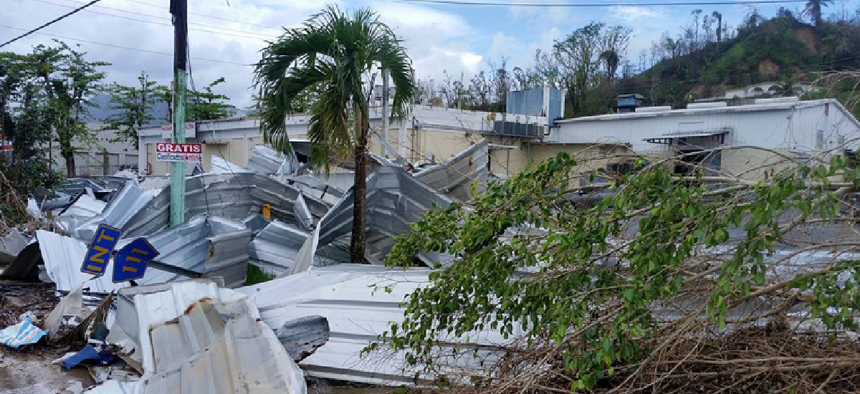Easy access to cloud-based disaster solutions


Connecting state and local government leaders
A new AWS program connects government entities and nonprofits that use Amazon Web Services and need technology-related public-safety and disaster response solutions.
Shortly after a magnitude 6.4 earthquake hit Puerto Rico on Jan. 7, relief organizations contacted Amazon Web Services for help. That may seem like an odd place to turn, but the cloud provider launched the AWS Public Safety and Disaster Response Competency program last month to be of service in just such a situation.
The program connects government entities and nonprofits that use AWS and need technology-related public-safety and disaster response solutions that can help. After the earthquake, for example, two nonprofits reached out to AWS in search of companies and services that could help their endeavors to assess damaged bridges and houses. Similarly, government entities in fire-ravaged Australia have contacted AWS in search of vendors that can help them better understand citizen welfare.
“In Puerto Rico, they’re operating right now with limited [and] in some cases a disconnected environment, and that will be for a prolonged period of time, and so we need partners who have the capability to be able to use Snowball [AWS' data transport solution] or Outpost, [an on-premise way to run AWS] in those situations," said Sandy Carter, vice president of public-sector partners and programs at AWS. Relief agencies need vendors "not only skilled on disaster response, but they [must] also have the right technology background as well,” she said.
To join the competency program, vendors must first be part of the AWS Partner Network, a global program for technology and consulting businesses that use AWS to build solutions and services for customers. They join APN at what the company called the “select” level. To join the Public Safety and Disaster Response Competency group, they need to earn an “advance” level. That’s where a thorough vetting process comes in.
Vendors seeking to join the program must prove both technical and business competency and provide case studies showing how their solutions in areas such as reliability, security, analytics and ability to operate in disconnected environments worked in real-world situations that align with the three phases of the emergency response life cycle: prepare, respond and recover.
“We wanted to make sure that the partners could also work in the way that a disaster or a public-safety [organization] needed to work,” Carter said.
Vendors can also point to case studies such as how they assisted the American Red Cross or Federal Emergency Management Agency in crisis preparation.
For example, Abt Associates worked with the Army Corps of Engineers to develop a solution called the National Flood Risk Characterization Tool to assess flood risks that FEMA uses to do flood zone mapping.
“Because of that geospatial modeling and policy analysis, the U.S. Army has now a data-driven approach to mitigate flood risk and to react to that if it does occur,” Carter said.
Another partner, Maxar Technologies, developed a crowd-sourcing platform called GeoHIVE that it used after Hurricane Michael struck the Florida Panhandle in October 2018. With National Oceanic and Atmospheric Administration imagery, GeoHIVE asked people to categorize damage into three classes: destroyed, damaged or no damage visible. As a result, more than 7,000 buildings were assessed in about three hours. “Without that technology, that would have been a manual assessment, and that would have taken weeks or months,” Carter said.
The program, one of 11 competencies that the company offers, grew out of AWS customers' requests for trusted vendors in the public-safety and disaster response areas, she said. The need for more efficient response has grown along with the amount of direct economic losses that communities worldwide have reported. According to a report by the United Nations Office for Disaster Risk Reduction, economic losses totaled $2.9 trillion between 1997 and 2017, more than double what was reported in the previous two decades.
Announced at AWS’ re:Invent last month, the Public Safety and Disaster Response Competency program currently has 17 companies, with five more in the hopper.
Right now, those partners fall into the consulting category, but technology partners will be added later. Consulting partners are businesses such as system integrators and value-added resellers, while technology partners include original equipment manufacturers and network carriers.
NEXT STORY: Local governments look to the cloud




